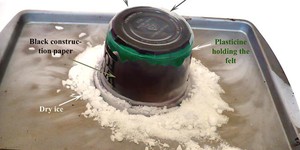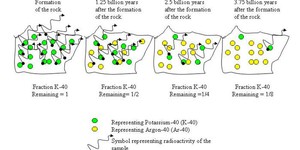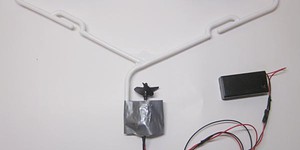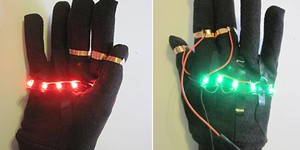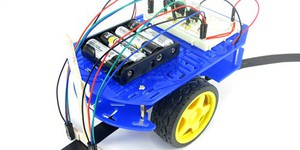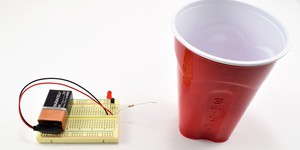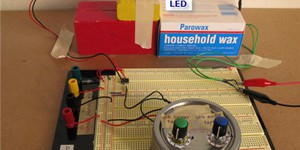Others Like “Build Your Own Radon Detector” (top 20 results)
|
Are you fascinated by radioactivity and the emission of particles caused by the disintegration of an atom? This science project enables you to observe safely a spectacular display of radioactive decay. Following the instructions in the Procedure, you will be able to isolate a safe radioactive source and build a cloud chamber to watch the radioactive decay. Then you will use your cloud chamber to discover if a plastic lid can shield you from this type of radioactive decay particles.
Read more
Space exploration, living, and working in space exposes space travelers and their equipment to radiation not present on Earth. The study of how we can protect ourselves and our equipment is an essential part of space exploration. Although you will not be able to test at levels equivalent to what you might encounter in space, you can test with lower and safer levels of radiation in the lab or at your home.
There are many types of radiation. This project concentrates on ionizing radiation, or…
Read more
Do you realize that you are constantly bombarded by particles? You do not feel them, you cannot see, hear, or smell them, but they are always there! These particles — collectively called background radiation — might even travel through you without ever interacting with the molecules in your body. In this science project, you will build your own cloud chamber to prove the existence of background radiation. You will then use your cloud chamber to determine if the background…
Read more
What do rocks and clocks have in common? Both keep track of time.
Yes, radioactive isotopes present in rocks and other ancient material decay atom by atom at a steady rate, much as clocks tick time away. Geologists use those radioactive isotopes to date volcanic ash or granite formations like the giant Half Dome in Yosemite National Park. Anthropologists, archeologists, and paleontologists also use radioactive isotopes to date mummies, pottery, and dinosaur fossils. Does this sound abstract…
Read more
The world's oceans are home to the most strange and amazing creatures. What do scientists know about these deep-sea animals and how can they study them easily? One way to learn about these animals in their homes is to use underwater robots. Underwater robots can record data that would be difficult for humans to gather. But what are robots and how are they made? In this robotics engineering project, you will discover what makes up a simple robot and build and test your own underwater robot.
Read more
From traffic safety lights to neon signs, lights have a way of getting peoples' attention. So it makes sense that if a person wants to get attention, wearing clothing with built-in lights might help. These types of clothing, called electronic textiles (e-textiles for short), or wearable electronics, already exist. Instead of using hard surfaces for circuits (like inside your computer or cell phone), e-textiles weave electrical parts like batteries, wires, and lights directly into wearable…
Read more
How easy is it for you to walk along and follow a line that is painted on the ground? Simple, right? You might be able to follow a line without giving it much thought, but how could a robot do that? In this project, you will build your own automatic line-following robot that can race around a track that you create. This technology has plenty of real-world applications—maybe one day you could help design self-driving cars!
Read more
You can see examples of parabolic reflectors in flashlights, car headlights, satellite TV antennas, and even on the sidelines at football games. How do these "dish" antennas work to gather signals? What is the best position for placing the detector for these antennas? In this project, you can use an LED and a simple photodetector to find out for yourself.
Read more
Wouldn't it be nice to avoid those nasty electric shocks you get after you have walked around on carpet and then touch a doorknob? These shocks are caused by static electricity. In this project, you will build a super-sensitive charge detector to investigate the electric fields created by static electricity. The detector can sense invisible electric fields before you touch something and get zapped, so try this project to avoid the shock of shocks!
Read more
If you want to get your friend's attention at a crowded sporting event with lots of people cheering, you need to shout. If you're trying to do the same thing in a quiet library, a whisper works. The detection limit for each of our senses depends on the amount of "background" stimulation that is already present. This project uses an LED control circuit to investigate detection of changes in light levels.
Read more
|
Explore Our Science Videos
See Germs! Hand Washing Science Experiment
Strawberry DNA Extraction
Racing Drones: Does Practice Make you Faster?





